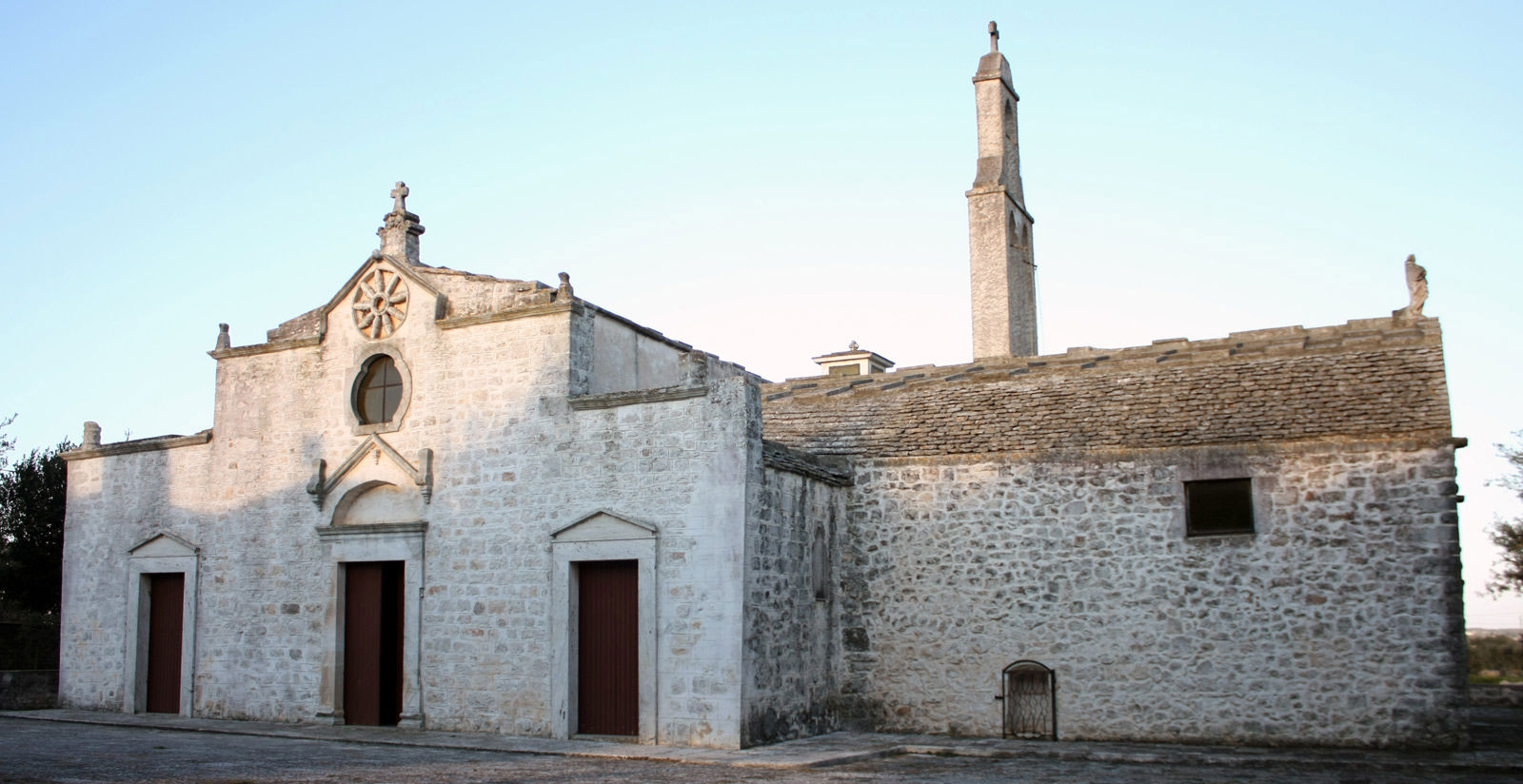Monuments of interest
- Historic centre: an example of spontaneous architecture where you can find historical buildings (Palazzo del Governatore, Palazzo Vescovile, Palazzo Amati, Palazzo Lagravinese, Palazzo Devitofranceschi, Torre Capece).
- Torre di Porta Grande or Norman-Swabian Tower: medieval tower measuring 17 m in height that represented the town’s main entrance. There is a statue of St.Nicholas on the top of the tower. It has been subject to renovation over the years, the most recent of which in 1995.
- Church of St. Nicholas: built in the 14th century on the site of an ancient early Christian church of the Basilian monks, it houses two valuable stone works from the sixteenth century by the artist Stephanus Abulie Poteniani (Stefano da Putignano): a Madonna and Child known as the Madonna of the Goldfinch and a small tabernacle.
- Sanctuary of Madonna d’Ibernia (Madonna de Bernis): this sanctuary, located at approximately 3 km from the town centre, is linked to a legend. Indeed, it is said to have been the Virgin Mary herself who, in an apparition, showed the exact spot where a sanctuary dedicated to her would be built. The surrounding area is rich in pottery and finds dating from the Roman and medieval times. A Byzantine capital and some tombs were also uncovered and this makes it possible that the sanctuary was built on the ruins of a town which sprung up around an early Christian church.
- Fortified farm houses: the countryside surrounding Cisternino features various rural dwellings that represent the typical Apulian fortified farm house, including Masseria Montereale, Villa Cenci, Masseria Devitofranceschi, Masseria Costa and Masseria Montanaro.
The environmental heritage worthy of note includes all of the local countryside. Despite the period of uncontrolled illegal construction during the 1970s and 1980s, which compromised a large part of the magic of the Itrian Valley, a new phenomenon is currently taking place: a building boom in the name and on behalf of what is one of the area’s main activities – tourism.
Tourism in Cisternino has developed over the last decade thanks to this small town’s sole asset: nature, the landscape, the trulli and the historic centre’s spontaneous architecture.
The town’s woodland: the local territory contains approximately 400 hectares of woodland, 244 hectares of which belong to the town’s authorities, located at 250 to 350 metres above sea level. The town’s woodland represent’s the province’s most consistent forest formation.
At the present time, work is underway to improve the woodland by replacing the Aleppo pine and cypress trees with autochthonous broad-leaved trees (Macedonian oak, Downy oak, holm oak, etc.) which blend in better with the local plants such as the carob, Mediterranean hackberry, Hop hornbeam, Manna ash, field maple, etc. Approximately 42 hectares of the town’s woodlands have been replanted.
Traditions and Folklore
Cisternino’s most eagerly-awaited folkloristic events undoubtedly include the Easter Monday celebrations. Referred to by local inhabitants as “Pasquarèdde”, this celebration takes place at the Sanctuary of Madonna d'Ibernia where typical local sweets are brought (in the shape of a bag with two hard-boiled eggs for boys and in the shape of a doll with one hard-boiled egg for girls), known as “u churrüchele”, and said to symbolise prosperity and fertility. It is no mere coincidence that the Madonna d’Ibernia is the Madonna of life, fertility and abundance. Indeed the Sanctuary is widely used for weddings for both the reasons listed above and for its unique, picturesque setting.
The annual festivals - Festival Pietre che Cantano, Festival delle Bande Giovanili, Festival Suoni Sacri e dal Pianeta, Alterfesta - are all of great importance.
While the best-known food festivals in Cisternino and its surrounding hamlets are the Sagra delle orecchiette (an ear-shaped local pasta) and the Rabbit Festival, held in August, and the Grape Festival held in September.
The food festivals provide a opportunity for the community to come together and a moment of pleasure for all the town’s inhabitants, as well as an all-important way of keeping alive the region’s folklore which forms the basis of the identity of the town and of all its inhabitants.







